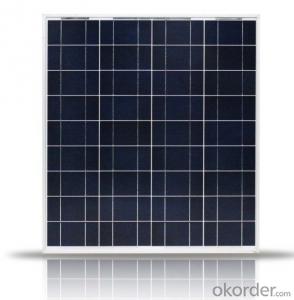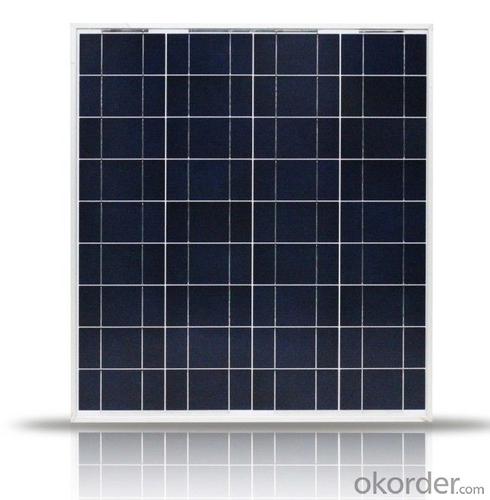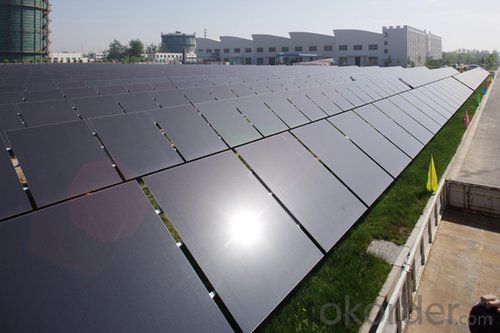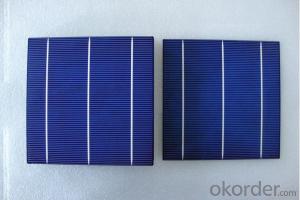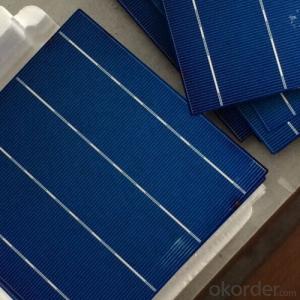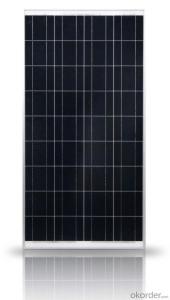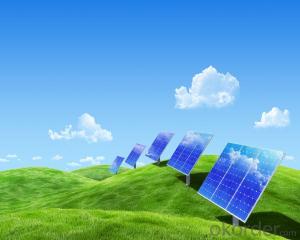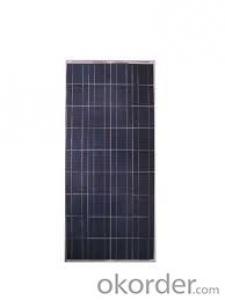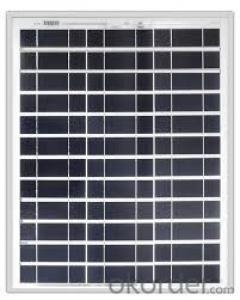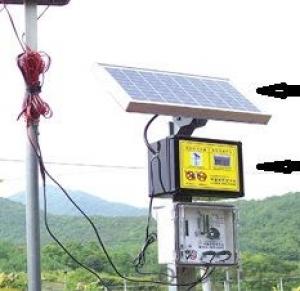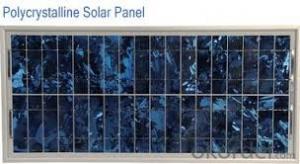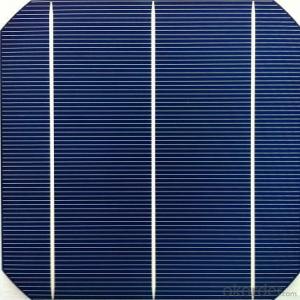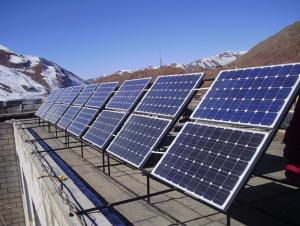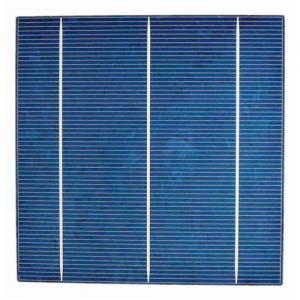Avorion Solar Cells - Factory Direct Sale 250W Poly Solar Panel with 25 Years Warranty CNBM
- Loading Port:
- Qingdao
- Payment Terms:
- TT OR LC
- Min Order Qty:
- 10 set
- Supply Capability:
- 300000 set/month
OKorder Service Pledge
OKorder Financial Service
You Might Also Like
Polycrystalline Solar Modules
CNBM offers a range of small, medium and large polycrystalline solar modules, designed for a range of requirements.
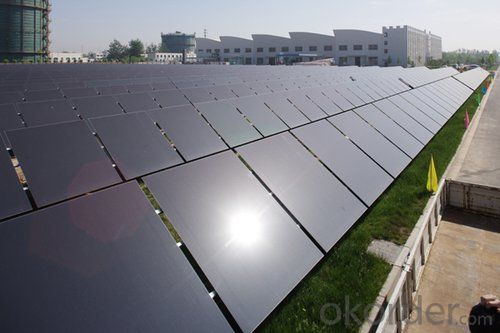
Specifications:
Tolerance | +/-3% |
Cell | Polycrystalline silicon solar cells (156 x 156mm) |
N0. of Cells | 60 (10 x 6) |
Dimension of Modules (mm) | 1650 x 990 x 40 |
Weight (kg) | 25.5 |
Limits:
Operating Temperature | -40~+85? |
Storage Temperature | -40~+85? |
Maximum System Voltage | 1000 VDC max. |
Hail Impact | Diameter of 28mm with impact speed |
Temperature and Coefficients:
NOCT | 48C+/-2? |
Voltage temperature coefficient (%/K) | -0.35 |
Current temperature coefficient (%/K) | 0.05 |
Power temperature coefficient (%/K) | -0.45 |
Characteristics:
Model: | SGM-200P | SGM-210P | SGM-220P |
Max-power voltage Vmp (V) | 29.2 | 29.4 | 29.41 |
Max-power current Imp (A) | 6.85 | 7.14 | 7.48 |
Open-circuit voltage Voc (V) | 36.5 | 36.69 | 36.9 |
Short-Circuit Current Isc (A) | 7.28 | 7.6 | 7.93 |
Max-power Pm(W) | 200 | 210 | 220 |
Model: | SGM-230P |
Max-power voltage Vmp (V) | 29.8 |
Max-power current Imp (A) | 7.72 |
Open-circuit voltage Voc (V) | 37.31 |
Short-Circuit Current Isc (A) | 8.19 |
Max-power Pm(W) | 230 |
STC: Irradiance 1000W/m2, module temperature 25?, AM-=1.5
Poly Crystalline Solar Panels Specifications Range
Maximum Power (Pm) | Dimension | Weight | Operating Voltage (Vmp) | Operating Current (Imp) | Open Circuit Voltage (Voc) | Short Circuit Current (Isc) |
0.45W | 140x80x10mm | 0.08kg | 3.3V | 150mA | 4.6V | 160mA |
1.0W | 162x140x10mm | 0.16kg | 7.5V | 150mA | 10.3V | 160mA |
4.5W | 269x251x23mm | 0.8kg | 16.5V | 0.27A | 20.5V | 0.3A |
10W | 420.1×268.9×22.6mm | 1.92kg | 17.5V | 0.58A | 20.5V | 0.6A |
20W | 425x502x50mm | 3.0kg | 16.8V | 1.19A | 21.0V | 1.29A |
30W | 593x502x22.6mm | 3.9kg | 16.8V | 1.78A | 21.0V | 1.94A |
40W | 655x537x50mm | 5.75kg | 17.3V | 2.31A | 22.1V | 2.54A |
50W | 839x537x50mm | 6.0kg | 17.5V | 2.9A | 21.8V | 3.17A |
65W | 1111x502x50mm | 7.2kg | 17.6V | 3.69A | 22.1V | 3.99A |
80W | 1204x537x50mm | 7.7kg | 17.6V | 4.55A | 22.1V | 4.8A |
- Q: What materials are commonly used in solar cells?
- Commonly used materials in solar cells include silicon, which is the most widely used material in photovoltaic cells, as well as thin-film materials such as cadmium telluride (CdTe), copper indium gallium selenide (CIGS), and amorphous silicon (a-Si). Other materials like perovskite and organic materials are also being researched and developed for solar cell applications.
- Q: Can solar cells be used on mobile devices?
- Yes, solar cells can be used on mobile devices. In fact, there are already solar-powered chargers available that can be attached to mobile devices to harness solar energy and charge them on the go. These solar cells convert sunlight into electricity, providing a sustainable and eco-friendly source of power for mobile devices.
- Q: How do solar cells perform in areas with frequent power outages?
- Solar cells perform well in areas with frequent power outages as they can provide a reliable and independent source of electricity. As long as there is sunlight, solar cells can generate electricity, allowing households and businesses to continue operating even during power disruptions. Additionally, excess energy generated by solar cells can be stored in batteries for use during nighttime or cloudy days, ensuring a continuous power supply.
- Q: What is the history of solar cell development?
- The history of solar cell development can be traced back to the 19th century, with the discovery of the photovoltaic effect by French physicist Alexandre-Edmond Becquerel in 1839. However, it wasn't until the mid-20th century that significant advancements were made in solar cell technology. In 1954, Bell Labs introduced the first practical silicon solar cell, which had an efficiency of around 6%. Over the years, research and development efforts focused on improving efficiency, reducing costs, and exploring alternative materials. In the 1970s, solar cells started being used in space applications, such as powering satellites. In the 1990s, innovations like thin-film solar cells and multi-junction cells further expanded the possibilities of solar energy. Today, solar cells have become increasingly efficient, affordable, and widely adopted, playing a vital role in the transition to clean and renewable energy sources.
- Q: Can solar panels be charged with light?
- Since the output power of solar modules depends on factors such as solar irradiance and solar cell temperature, it is not recommended to use light charging, efficiency is not only very low, and also meaningless.
- Q: Can solar cells be used for powering remote data collection devices?
- Yes, solar cells can be used for powering remote data collection devices. Solar cells harness sunlight and convert it into electricity, providing a reliable and sustainable source of power for devices located in remote areas where access to traditional power sources may be limited or unavailable.
- Q: Can solar cells be used for powering communication towers?
- Yes, solar cells can be used for powering communication towers. Solar energy can be harnessed using photovoltaic cells, which convert sunlight into electricity. These cells can generate power throughout the day, making them a reliable source of energy for communication towers that require continuous operation. Additionally, solar cells can be integrated with batteries to store excess energy for use during nighttime or cloudy periods, ensuring uninterrupted power supply to communication towers.
- Q: Can solar cells be used in powering drones?
- Yes, solar cells can be used in powering drones. Solar panels can be integrated onto drones, allowing them to convert sunlight into electricity, which can then be used to power the drone's battery or directly operate its motors. This enables drones to have extended flight times and reduces the need for frequent battery replacements or recharging.
- Q: What is the role of tracking systems in solar cell installations?
- The role of tracking systems in solar cell installations is to optimize the efficiency and output of the solar panels by adjusting their position and angle throughout the day to track the movement of the sun. This allows the panels to capture the maximum amount of sunlight and generate more electricity, increasing the overall performance and effectiveness of the solar cell installation.
- Q: How are solar cells used in agricultural applications?
- Solar cells are used in agricultural applications to generate electricity for various purposes, such as powering irrigation systems, lighting in greenhouses, and running equipment like pumps and fans. They help farmers reduce their reliance on traditional energy sources and promote sustainable farming practices.
Send your message to us
Avorion Solar Cells - Factory Direct Sale 250W Poly Solar Panel with 25 Years Warranty CNBM
- Loading Port:
- Qingdao
- Payment Terms:
- TT OR LC
- Min Order Qty:
- 10 set
- Supply Capability:
- 300000 set/month
OKorder Service Pledge
OKorder Financial Service
Similar products
Hot products
Hot Searches
Related keywords
